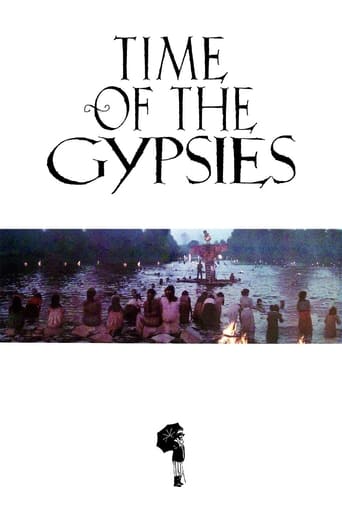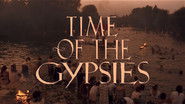clairetianqihou
To see this film, I really don't know about Eastern culture, especially Yugoslavia such a history in several divided country. At the beginning of the film we can see in the wilderness of villages and some features common old people. I consider that it was far away with me. Also when i see young boy arrived Milan, that scenes let me remember his places when he left. The plot make that audience fell sad. Almost we can not distinguish which one is the dream, which is the true life. I think that the yellow village is the young boy 's real life . Although in his village people are very poor, that is his hometown.There are three times that the character made cry. The fist time is his Grandma's tears . At that moment, the young boy seems grow up. The second time the young boy cry is when he hold the box of apple and see people left him. Everything is full of happy , but is the past, also his life slowly started behind him. The last time the boy cry is when he in the train, the young boy become to father. He still remember his love beautiful free childhood life, but now he have to gone to another way.Life likes a circle, you didn't wear anything come to the world , and you still cannot bring anything when your body back home. A children took the gold penny on his eye, everything cannot bring .
jia_kehan
The opening tens of minutes described the family background and Perhan's dissolute life, also foreshadowing for Perhan breakaway, and laid the fatalistic foundation for the whole movie. Gypsies' innocent, unfettered national character, the unprivileged residents' seek joy amidst sorrow were comically interspersed saved the risk of this movie falling into boring. The grandmother spoiled and indulgenced Perhan, and the lack of education were the sorts of foretell that the family was about to suffer the doom.Perhan's run-away was always about the money, for his original and menial dream. Once a lonely boy expand his horizons, the faith will no longer unbreakable. People's involuntarily frustration and sadness can be carefully observed personal identity lost and moral depravity in the historical background. The decadence of moral, no more daydreams for the world, the degrading behavior under the coat of reasonable resin for became outstanding; the basic level was out of control would lead his fate into a domino effect, and the betray of his wife just pull the trigger for his revenge. At the end, in Perhan's funeral, Jesus statue falling apart onto the ground pulled the curtain of hopeless faith.Most of Kusturica's works have concerns for this vulnerable ethnic. Different with Jews, Gypsies isolation from their own cultural conservatism in history. Gypsy have been described as decadent, and weird race for a long time; suffered unfair comments from other places. However, in Kusturica's eyes, Gypsies are noble, passionate, loyal, and fearless with no doubt. The difficulty that how the stray ethnic integrate into modern society was mildly expressed by a personal tragedy.
emilylippman
Kusturica's "Time of the Gypsies" is truly a film unlike any other. It is, for all intents and purposes, a coming of age story. However, due largely in part to the film's cultural context and use of magical realism, Kusturica manages to communicate a much more complex story.The film revolves around Perhan, a young Gypsy on the brink of adulthood with telekinetic abilities. His life is deeply rooted in struggles of poverty and family. Somewhat idealistic in nature, Perhan seems determined to escape these struggles, although he goes about it in a way that really only serves to perpetuate them. He doesn't know any better, and how could he? Herein lies one of the film's most devastating themes- even with good effort and intention, life has a cyclical nature. So, just as Perhan lives without a mother, so will his child- and worse. This sort of inescapable, cyclical fate is prevalent in the film and is, likely, a critique of life behind the Iron Curtain.The experience of watching "Time of the Gypsies" is akin to dreaming while awake, and not always in a pleasant way. The film's use of magical realism reflects the bizarre daily realities for Perhan, Azra, and the other characters- all of whom are struggling just to survive in the Third World. Kusturica's interesting juxtaposition of comedy, magical realism, and tragedy gives the viewer a taste of how confused and challenged these characters (and their real life counterparts) must be all the time. All things considered, this is one of the most unique films I have ever seen. It is not an easy viewing experience, as it requires one to endure brutal tragedy, betrayal, and loss all wrapped up in a dreamscape of magical realism. And admittedly, at times, it can be esoteric. However, I found "Time of the Gypsies" to be incredibly powerful and definitely recommend it to anyone interested in truly inspired International Cinema.
skyblue4eva
"Time of the Gypsies" directed by Emir Kusturica is spoken in Romany throughout the film. The original title, "Dom za vesanje" which literally means "Home for Hanging", hints self- destructiveness in the film. At first, the film is introduced in a comical atmosphere. The protagonist, Perhan, is a young, honest Romany raised by his grandmother. He is now a grown-up but only thing he has is a kinetic power that enables him to move an empty can. His sister is sick, and his uncle just ate Perhan's turkey (the one and only thing that Perhan had, other than his kinetic power). Perhan falls in love with Azra but her mother refuses him; and he tries to hang himself. Then Perhan moves out to city with Ahmed to cure his sister, and there he is introduced to a world of crime. And the mood of the film begins to change.The second half of the film concentrates on corruption of Perhan's soul, his revenge and the self-destruction; and paradoxically the hope of redemption when Perhan undergoes all the above. Through magical realism, Kusturica successfully demonstrates ups and downs of a life. The border between real life and dream is blurred and the audiences are somewhat relieved from the tragedies by the dream-like real life sequences.Music is also a big element in this film. Each characters has somewhat like theme songs, and it is interesting that Perhan's is played by himself with an accordion in the film.Also, to show the ups and downs, the plot seems to have a cyclical structure. Choices that Perhan makes throughout the film sometimes ends in success and sometimes ends in tragedy. Either way, the characters, the plot, and also the mood end the same as they began.




